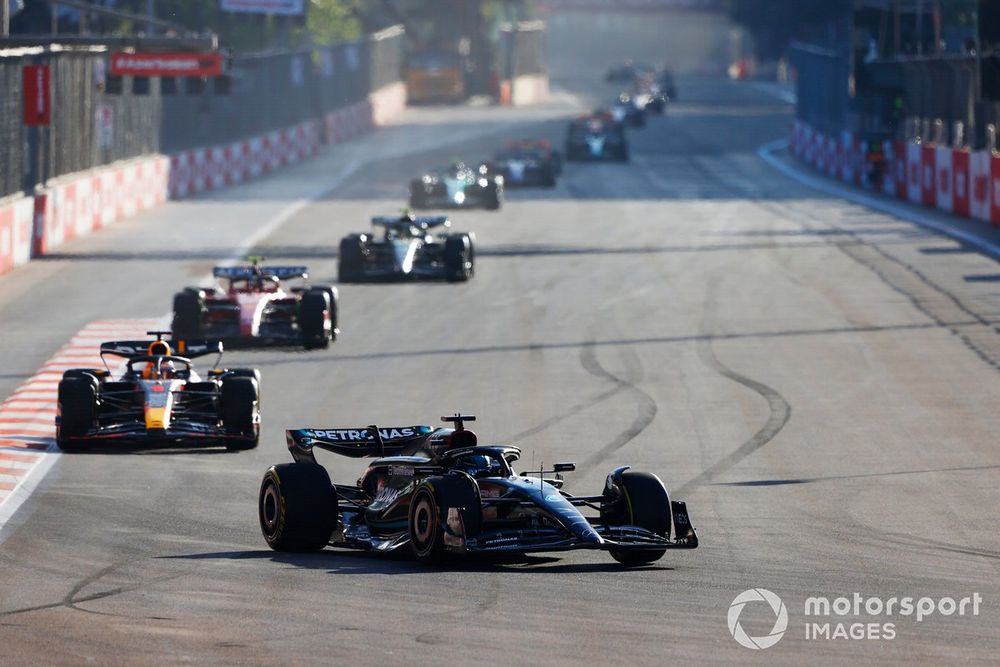In the second year of the 2022-era of ground-effect machines, following other cars in traffic has become more difficult as teams have found ways to add downforce to their cars, making it progressively harder to overtake.
Last week’s colourless Azerbaijan Grand Prix painfully highlighted the lack of action on a street circuit that used to be known for its wild drag racing along its trademark 2km-long straight.
But, despite races becoming more processional, the FIA decided to shorten the DRS zones in both Azerbaijan and at this weekend’s Miami Grand Prix based on data from last year’s events.
Misgivings over the shorter DRS zone were raised in Baku’s drivers’ meeting, but no changes were made and, according to Russell, last Sunday’s tepid race “speaks for itself”.
“I think all of us didn’t really understand why they’ve been shortened,” he said on Thursday in Miami.
“None of us were consulted about it or asked our opinion on it. And I think the race speaks for itself in Baku. Clearly, in Baku it was way too short.”
As GPDA director, Russell wants to hold talks with F1 and the FIA to see what can be done to make races more entertaining.
George Russell, Mercedes F1 W14, Max Verstappen, Red Bull Racing RB19
Photo by: Andy Hone / Motorsport Images
“For sure, we’re going to speak with the FIA and F1 about this, because we want to be able to race,” he said.
“We want to be able to fight as we all did in go karts where there was no aerodynamics to that. That’s the ultimate dream.
“I think our sport took a really good turn for the better when these new cars were introduced, but we need to take it to the next step now.”
Russell doesn’t want to see a knee-jerk reaction to the growing problem, but pointed out DRS isn’t the only factor at play.
Previously, world champion Max Verstappen stressed the challenge of following cars in low-speed corners due to the increased weight and stiff suspension of the current crop of machinery.
There has also been less tyre degradation in recent races, allowing most drivers to complete a one-stopper in Baku with an ultra-long stint on hards.
That lack of strategic variance and tyre drop-off has reduced one of the most reliable ways to promote overtaking.
“At the end of the day, we all want the most exciting races and there’s probably a few easier ways to achieve this in the short term,” Russell added.
“About the tyre degradation, it’s been easy one-stops in the last couple of races.
“And when everybody’s pushing flat out,…
Click Here to Read the Full Original Article at Autosport.com – Formula 1 – Stories…

